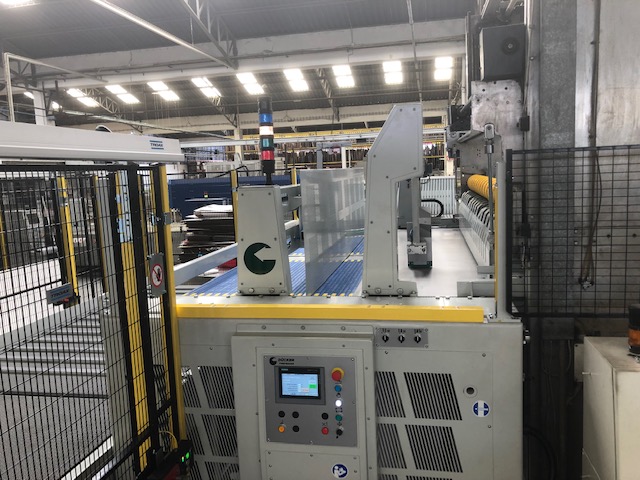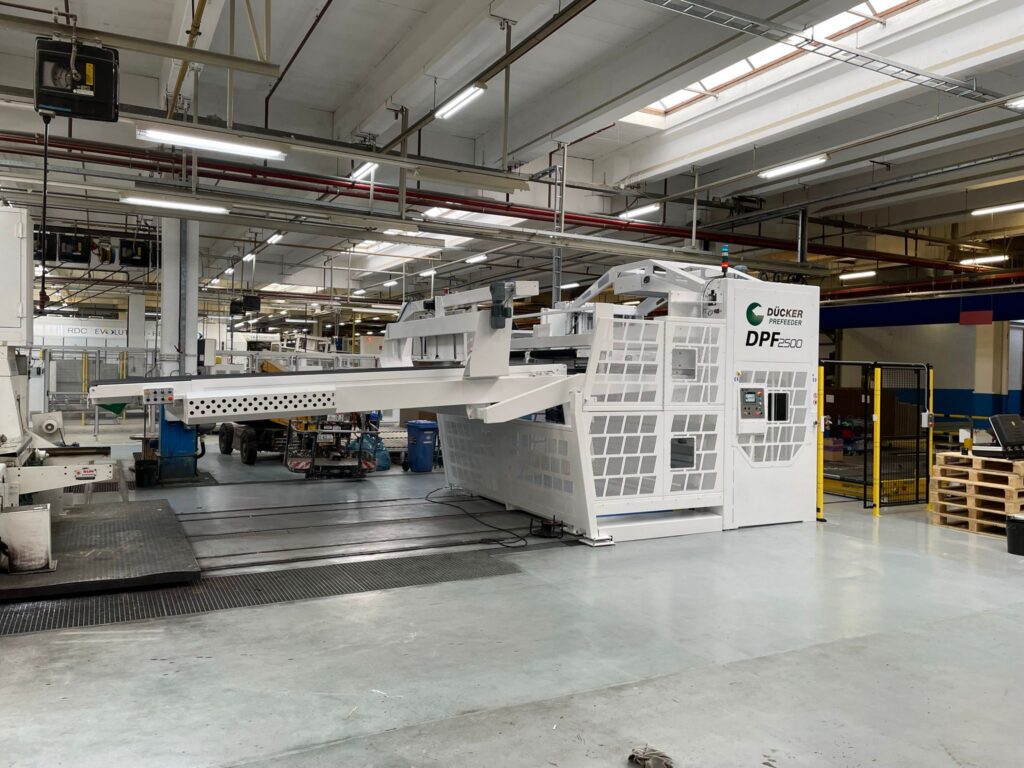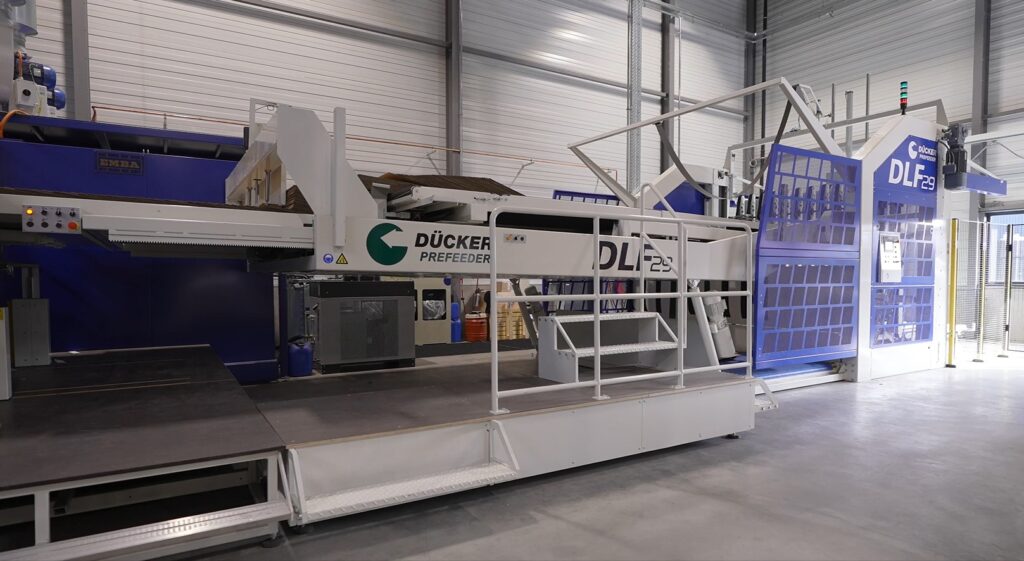Improving output of a rotary diecutter by means of the Stacker Retrofit:
Elimination of infeed interrupts on load changes:
The infeed of the diecutter doesn’t need to be interrupted anymore after installation of this
stacker retrofit.
Wrap-arounds, fruit and vegetable boxes, double wall, pizza boxes, beer and other drinks
trays and more, will typically run without interrupting the infeed.
This allows the machine to run continuously, results in reduction of flexo ink smearing on
the first few sheets after restarting the feed, simply because feed starts are reduced to a
minimum.
Of course, it also means more output because there are no longer “lost” feeds.
Operators still have a choice to run with feed interrupt should they require it, however this
has to be chosen by the operators specifically, default is continuous feed. (This applies to
95% or more of the orders, operators may want to run certain odd jobs with interrupting
the infeed. This may be due to very lightweight paper, long and wide plates with “weird”
cut-outs.
Elimination of the up stacking concept:
The existing upstacker is turned into a down stacker by means of this retrofit. More
specifically, the existing conveyor belt is approaching the stacking hopper under a
constant, upward angle and remains there, ensuring each sheet of board to enter the
stacking hopper under exactly the same conditions. It is common knowledge that
upstackers are very difficult to set up because of the constantly changing angle of
approach. Board may catch and cause hopper jams all the time. The existing conveyor
belts can still be moved out of the way (up) when one wants to do maintenance, or needs
clearance for other reasons.
Existing upstackers known to us include GO Martin (USA), Martin (= Bobst-Martin from
France), Villacieros (Spain), EMBA (Germany) Texo (Italy, now Dong Fang), Curioni (Italy)
and many more.
More:
– The drop height of the finished bundle is always very high at the existing upstackers. Eg
GO Martin often drops the bundle more then 150 mm to fall down, this doesn’t benefit to
bundle quality. Our machine has reduced height, about 40 mm, the bundles / piles are
controlled and squared as they drop onto the lift conveyor.
– Should a user wish to palletise automatic he must ensure good bundle quality to allow
formation and stacking without operator intervention. The bundle quality presented by our
machine is generally ideal, due to continuous squaring and aligning of each blank.
Furthermore: bundle height can be up to 450 mm, as well as stacks up to 1000 mm in the
standard machine. Should the user wish to build higher stacks this is possible, in that case
a pit underneath the machine has to be prepared with the addition of a scissors lift
conveyor behind the stacker in order to lift the stacks back to floor conveyor level.
An empty pallet or bottom sheet can also be entered, addition of a supply conveyor or
pusher can be arranged. All dimensional adjustments of the stacker can be automated
such as length and width adjustment of the backstop, side- and back pushers. This is
optional at an additional price, which is not yet known. In practice, this is usually not
necessary because the time required to set up, is approximately 2 minutes.
– Return on investment: Commonly 2 (or more) operators handle bundles because they
have to correct each one of them before stacking them into the stacking corner or semiautomatic
loadformer. With this retrofit there is no need to correct anymore. Saving one
man on an annual basis, is achievable.
Much less waste because there are far fewer rejected blanks due to reduced ink smearing.
Specific numbers are not available yet but at least 30% profit in this area has been proven
in the past.
Because jobs run much more controlled the operator can and will run at higher line
speeds. Certain jobs may even run 50% faster. Obviously, everything depends on order,
quality and culture in the respective production environment.
Example: 1 bundle contains 50 sheets, at present the infeed interrupts and loses 4 sheets
at each load change (average).
Line speed 6000 sheets / hour, this means 120 bundles per hour. Loss will be 120 x 4
sheets = 480 sheets due to the inproductivity during interrupts. Actual number of sheets
produced is 6000 – 480 = 5520 sheets / hour. Loss of 12.5% compared to continuous
operation.
Much more important, line speed will be higher; for example instead of 6000 it will be
7000 sheets / hour, increase another 16%. No more printing / ink smearing issues, 480
plates extra per hour is another 12.5%.
Precondition is that the existing stacker is in good shape, the beater section and the
conveyor belt will not be revised or modified. This retrofit replaces and improves the
stacking hopper and lift.
When the pushers and backstop of the existing stacker are in perfect shape optional side
pushers and backstop may not have to be delivered, results in price reduction. The retrofit
will take over controls, however. A possible zero crush rolls addition could also be left out
when these are in place and in good shape on the existing stacker.






